
This is an active learning lesson on English SOL:K.3 f blend sounds to make one-syllable words
- Subject:
- English
- Reading
- Material Type:
- Lesson Plan
- Author:
- Kimberly Douglas
- Date Added:
- 06/29/2023

This is an active learning lesson on English SOL:K.3 f blend sounds to make one-syllable words

This is an active learning lesson plan to help students begin to identify the intial and final sounds in words (e.g., /t/ in bat)

This is an active learning lesson plan for PreK to help students to begin to identify the initial and final sounds in words (e.g., /b/ in bat).

This is an active learning lesson for PreK students to help them begin to rhyme and produce rhymes of simple words.
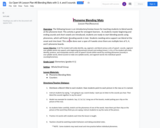
The following lesson is an introductory/review lesson for teaching students to blend words at the phoneme level. This activity is great for emergent learners. As students master beginning and ending sounds and short vowels are introduced, students are ready to start blending words using phonemes, which will foster decoding words in text. Students needing extra support can blend at the onset and rime level. This can be done over a span of 4 weeks since there are multiple tiers of 3, 4, and 5 phoneme boards.
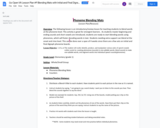
The following lesson is an introductory/review lesson for teaching students to blend words at the phoneme level. This activity is great for emergent learners. As students master beginning and ending sounds and short vowels are introduced, students are ready to start blending words using phonemes, which will foster decoding words in text. Students needing extra support can blend at the onset and rime level. This can be done over a span of 4 weeks since there are a few sets on initial and final digraph phoneme boards.
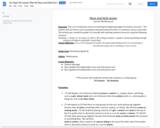
This is an introductory lesson to teaching the beginning stages of sentence structure. The teacher will use Picture sorts according to the grammatical function in a sentence. (nouns and verbs)
This activity was created for grade K to coincide with teaching sentence structure

The following lessons are introductory/review lessons for teaching students to distinguish concepts of print: words, and sentences from pictures. These lessons help a student’s oral knowledge by repeating sentences and phrases as well as counting/tapping words in sentences. The teacher will use Picture sorts according to the grammatical function in a sentence. (nouns and verbs)
This activity was created for grade K to coincide with teaching sentence structure
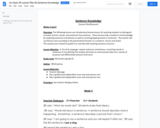
The following lessons are introductory/review lessons for teaching students to distinguish concepts of print: words, and sentences from pictures. These lessons help a student’s oral knowledge by repeating sentences and phrases as well as counting/tapping words in sentences. The teacher will use Picture sorts according to the grammatical function in a sentence. (nouns and verbs)
This activity was created for grade K to coincide with teaching sentence structure
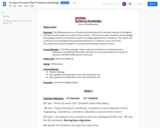
The following lessons are another two weeks' worth of teaching students to distinguish concepts of print, words, and sentences from pictures. It should be paired with Sentence Knowledge weeks 1, 2, 3, and 4, but can be done alone. These lessons help a student's oral knowledge by repeating sentences and phrases as well as counting/tapping words in sentences. The teacher will use picture sorts according to the grammatical function in a sentence (nouns and verbs). This activity was created for grade K to coincide with teaching sentence structure
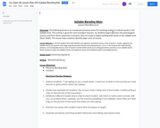
The following lesson is an introductory/review lesson for teaching students to blend words at the Syllable level. This activity is great for early emergent learners. As students begin to master the phonological process and their rhyme awareness increases, they are ready to begin working with words at the syllable level (foot/ /ball/). This lesson helps students identify larger units of sounds.
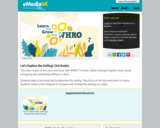
This video is part of the Learn and Grow with WHRO TV series. Watch Amanda Knighton teach about comparing and contrasting setting in a story.
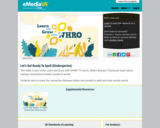
This video is part of the Learn and Grow with WHRO TV series. Watch Brandon Thompson teach about making connections of letter sounds to words.

This video is part of the Continue to Know with WHRO TV series. Watch Joy Phillips teach about the organizational pattern associated with cause and effect.
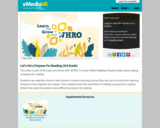
This video is part of the Learn and Grow with WHRO TV series. Watch Meghan Dmytriw teach about setting a purpose for reading.

This video is part of the Learn and Grow with WHRO TV series. Watch Meghan Dmytriw teach about summarizing nonfiction text.
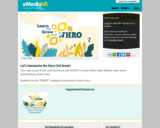
This video is part of the Learn and Grow with WHRO TV series. Watch Mary Mathias teach about summarizing a fiction story.

Students will learn about cybersecurity and the importance of passwords to create a poster and commercial to show their NetSmartz, over a two-day lesson.
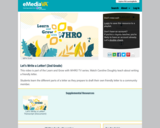
This video is part of the Learn and Grow with WHRO TV series. Watch Caroline Doughty teach about writing a friendly letter.

K.FFR3, Phonics and Word Analysis: The student will apply phonetic principles to read and spell words. F: Demonstrate knowledge of letter-sound correspondences to blend CV, CVC, VC wordsG: Decode (read) and encode (spell) words with short vowels, including words beginning or ending in a digraph (e.g., ch, sh, th, wh).